Reza Khalidy
Role: Conference Bursary Recipient
Department: Engineering
College: College of Engineering and Physical Sciences (CEPS)
Conference Attended: Goldschmidt 2021 Conference
Location: Lyon, France (Attending Virtually)
Value: $400
Research Presentation:
Crops and ecosystems are two themes of research conducted in FfT, aiming to meet ever-increasing global food demand and mitigate the environmental impacts of farming practices, respectively. Our research seeks to address these themes by applying wollastonite, as a limestone-alternative amendment, to agricultural soils, resulting in capturing atmospheric CO2 as carbonates through soil-water-mineral interactions. Previous laboratory and field-scale works in our group corroborated the effectiveness of this method for increasing the inorganic carbon content of the soil. Moreover, it came along with improvement in crop yield corresponded to the wollastonite application dosage. Our ongoing research on the pedogenic carbon formation and migration in soils includes investigating the fate of soil carbonates in agricultural soil, first formed in topsoils due to mineral weathering and its downward movement in the subsoil at various depths and over time. We aim to develop a systematic procedure based on numerical and experimental tools for verifying pedogenic carbonates and estimating long-term carbon sequestration rate in the soil, enabling farmers to claim carbon credits for carbon sequestration due to mineral soil amendment. Presently, such programs are conducted by a US-based organization, Nori, for soil organic accumulation in crop fields.
Objectives for Attending:
Attending this conference is an exceptional opportunity to make our research well known to other scholars dealing with this subject and get in touch with them for any potential collaboration. We also seek to present our approach to organizations that may be interested in adopting it for carbon sequestration and storage.
Furthermore, some sessions of the conference are related to several aspects of our project’s objectives. Firstly, a few topics of the conference, such as “Surface and subsurface CO2-fluid-mineral reactions for CO2 sequestration” are related to atmospheric carbon sequestration. Second, there are a few sessions (e.g., Innovative theoretical and analytical approaches to using isotope systems for understanding Earth Surface and crustal processes, Applying geochemical and isotopic tools for the study of climate, weathering, and sediment sourcing on clays and other sedimentary components), on the isotopic methods we aim to use to distinguish atmospheric carbon sequestrated in agricultural soils due to enhanced weathering from those of geological origin in the soil. Finally, some workshops (Advanced Geochemical Modeling/ Fluid-rock interaction in the Earth’s crust: coupling of field and experimental methods with numerical modeling) and programs (Fluid-rock interactions and reactive transport: from the laboratory to the real world) are related to reactive transport modeling, a critical tool we aim to use in order to predict long-term storage of carbon in agricultural soils.
Although moving to virtual format has made it difficult, we still hope to learn state-of-the-art knowledge on the topic and rectify our techniques. Also, there are unique workshops related to geochemical modeling in the conference offered by experts (developers of the software-Geochemist Workbench- we use) in the field and, we hope we even can achieve a deeper insight into software’s settings.

